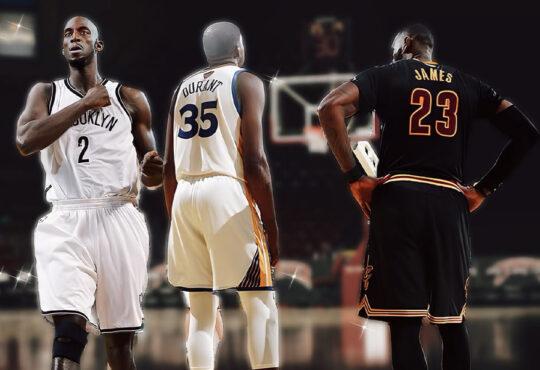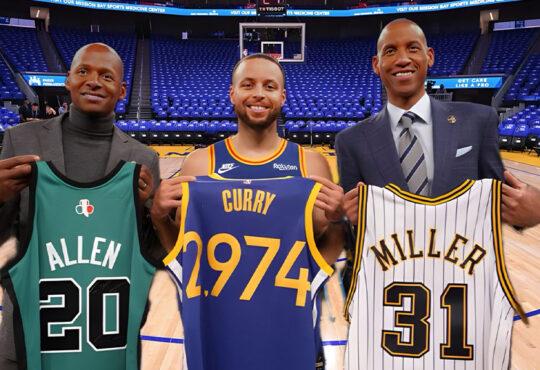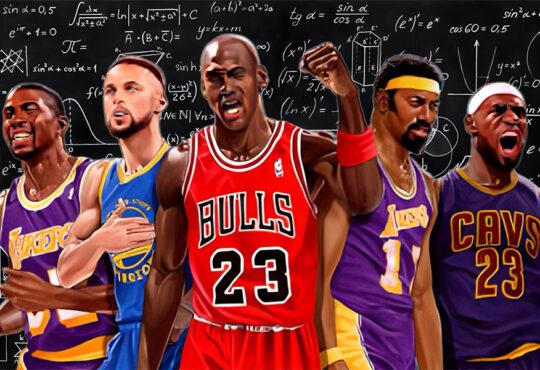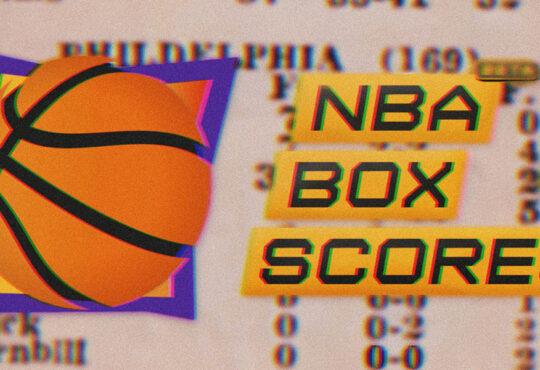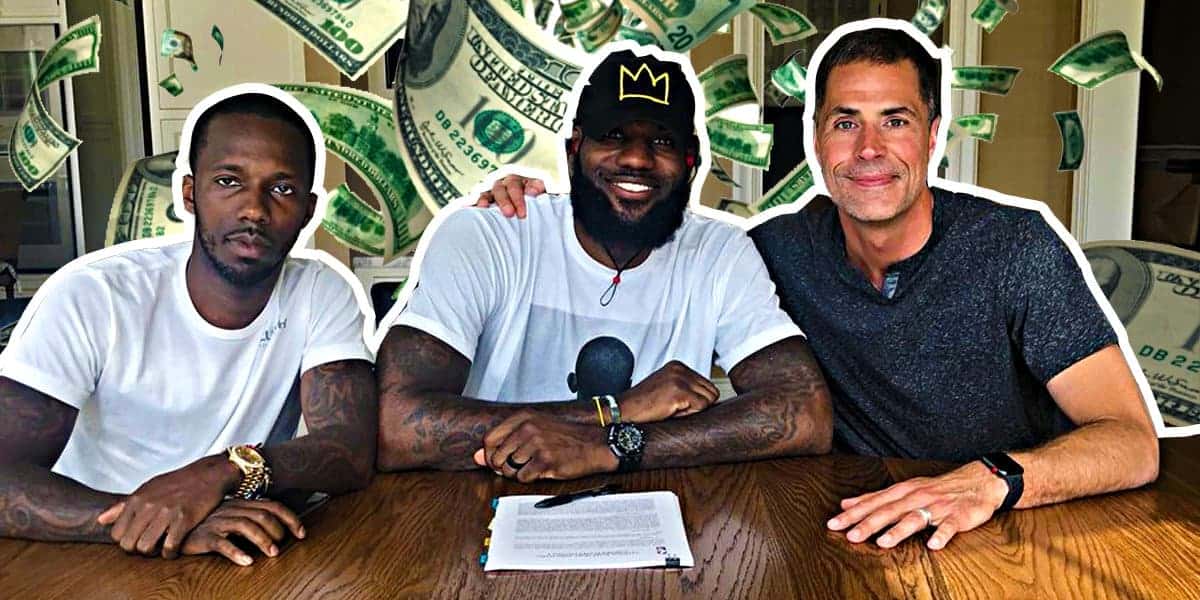
What is a max contract in the NBA?
What is a max contract in the NBA? Even though the basketball fans, in general, want to stick to what happens on the court, if you are a real die-hard fan, you will often hear about players’ contracts. The most hyped are the max and super max contracts when the best players in the league sign a contract that will bring them a ton of money.
So, in this article, we will try to explain what are these types of contracts and give some examples of them.
What Is A Max Contract In The NBA?
The max contract is essentially the most money a team is allowed to spend on a player under the rules of the NBA’s salary cap structure. A “Designated Rookie Scale Player Extension” adds five years to a rookie’s current contract, and the player qualifying for this rule must be a qualified veteran free agent at the end of his rookie deal.
Players signed under this rule get paid 25% of their team’s salary cap. The 25% salary rule states that a player who has played six years or less in the NBA can be paid the greater of either 25% of the salary cap or 105% of the player’s salary for the prior season.
Another max contract is the one that guarantees a player 30% of the team’s salary cap. Also known as the “Derrick Rose rule”, under the new CBA (Collective Bargaining Agreement) guidelines from 2017, a rookie-scale extension can be worth 30% of the team’s salary cap, instead of 25%, if the player satisfies certain criteria. The requirements are:
1) An All-NBA team selection (any of the three teams) in the player’s fourth season, or in two of the three seasons between his second and fourth seasons.
2) A Defensive Player of the Year selection in the player’s fourth season, or in two of the three seasons between his second and fourth seasons.
3) An MVP selection in any season from the player’s second year onward.
What is a Supermax rule?
The provision in the 2017 CBA that allows teams to create Designated Player contracts for their own veteran players, officially known as the “Designated Veteran Player Extension” (DVPE), came to be called the “Kevin Durant Rule” because it was seen as a reaction to a wave of veteran superstars leaving their teams in free agency, capped off by Durant’s departure from the Thunder to the Golden State Warriors in the 2016 offseason. The contract is also commonly called “The Supermax”. The 2011 CBA allowed all of the teams that were trying to lure Durant to offer him the same initial salary of $26.5 million.
For a veteran player to qualify for such an extension, he must be entering his eighth or ninth season in the NBA, and have either:
- made the All-NBA team (at any level) in either the season immediately before signing the extension, or two of the three previous seasons;
- been named NBA Defensive Player of the Year in either the season immediately before signing the extension or two of the three previous seasons; or
- been named NBA MVP at least once in the previous three seasons.
Additionally, the team offering the extension must have originally drafted the player or obtained him in a trade while he was on his rookie contract.
Players who qualify can be offered contracts with a starting salary between 30 and 35% of the salary cap. The extension cannot last more than five years after the expiration of the player’s current contract (or five years for a player who is a free agent when signed) but can be negotiated and signed one year before the current contract expires. The extension can be offered to a team’s own free agent as well as a player with time left on his contract. Additionally, once a player signs a DVPE, he cannot be traded for one year.
Ironically, while the rule was intended to encourage star players to stay with their current teams, the first major move by an NBA team involving a player eligible for the DVPE was the Sacramento Kings’ trade of DeMarcus Cousins to the New Orleans Pelicans during the 2017 All-Star break. Cousins’ contract with the Kings was not set to expire until 2018, but he was eligible to sign a DVPE after the 2016–17 season for up to $209 million over five years, a financial commitment that the Kings were apparently unwilling to make.
By the end of the 2018–19 season, Sports Illustrated writer Andrew Sharp began a story on the supermax rule with the following sentence: “If you’ve been paying attention to the NBA for the past two years, it goes without saying that the NBA’s “supermax” contracts have been a failure.” First, he noted that supermax money was not enough to discourage superstars on small-market teams from seeking to join title contenders, even for noticeably less money. Sharp argued that the rule in fact created more problems than it solved:
Teams who develop and retain homegrown superstars will find themselves rewarded with uniquely-bloated salary caps and stiff luxury tax payments. Meanwhile, superstars who decide to stay loyal will be asked to spend their prime with shorthanded rosters and handicapped front offices.
Sharp’s colleague Rohan Nadkarni questioned the DVPE eligibility criteria, as key players like Klay Thompson and Karl-Anthony Towns are not eligible despite their excellent performances.
Supermax contracts
The first player to sign a supermax contract was Stephen Curry, who agreed to a new five-year DVPE deal with the Warriors, worth $201 million, that runs through the 2021–22 season. Curry signed the contract once the NBA’s free agency moratorium ended on July 6, 2017.
Shortly thereafter, James Harden agreed on a DVPE with the Rockets. At the time of signing, his current contract had two years remaining with total pay of $59 million; the extension added another $170 million over four seasons, ending in 2022–23.
The next supermax signing was that of John Wall, who agreed later in July to a four-year, $170 million extension that began in 2019–20. In late September, Russell Westbrook became the fourth and final supermax signing of the 2017 offseason, signing a five-year, $205 million extension that started in 2018–19.
Damian Lillard agreed to a four-year, $196 million extension with the Portland Trail Blazers during the 2019 offseason. The extension starts in 2021–22 and includes a player option for 2024–25.
The largest supermax signing was that of Giannis Antetokounmpo, who agreed to a five-year, $228 million extension with the Milwaukee Bucks during the 2020 offseason. The extension starts in 2021–22 and includes a player option for 2025–26.
The Maximum Player Salary
The Maximum Player Salary is the maximum amount of money a player can make in a single season. A player’s maximum salary depends on a number of factors, like his years of service in the league and the type of contract he is eligible to sign. The maximum amount applies to the first season covered by his contract, renegotiation, or extension. After that first season, the next seasons are governed by the 8% and 5% annual salary increase (or decrease) rules. Players can receive the “supermax” salary if they meet certain performance-based criteria described below.
General “Max” Rules
6 years or less — A player that has completed fewer than 7 years of service can be paid the greater of (i) 25% of the salary cap, or (ii) 105% of the player’s salary for the prior season.
7-9 years — A player that has completed at least 7 years and no more than 9 years of service can be paid the greater of (i) 30% of the salary cap, or (ii) 105% of the player’s salary for the prior season.
10+ years — A player that has completed 10 or more years of service can be paid the greater of (i) 35% of the salary cap, or (ii) 105% of the player’s salary for the prior season.
“Super Max” Rules
Designated Rookie Scale Player Extension — A first-round draft pick that has completed 3 years of service on his rookie-scale contract (i.e., is entering his fourth season in the league) that is otherwise eligible to sign a designated rookie scale player extension (i.e., the player rendered all of his services to his current team) can be paid salary in the first year of the extension of least 25% of that year’s salary cap. The first-year salary can (but is not required) be between 25%-30% of that year’s salary cap if the player meets one of the performance-based criteria described below.
The extension cannot include any incentive compensation.
The extension must provide for full 8% annual salary increase for each year of the extended term.
Example — In October of 2017 (just before the start of his fourth season on his Rookie Scale Contract), the Philadelphia 76ers signed Joel Embiid to a Designated Rookie Scale Player Extension, pegging his salary at 25% of the salary cap in the first year of the extended term (just over $25.467 million for the 2018-19 season). Including his annual 8% increases, the original projected value of Embiid’s extension was over $146 million. As Bobby Marks reported, Embiid’s extension includes a clause that increases his salary to 30% of the salary cap if he makes the All-NBA first team — if he achieves that honor, his extension’s overall value would increase by $30 million (and cause the 76ers to lose $5 million in cap space for each salary cap year).
5th Year Eligible Player
A player that has completed 4 years of service (i.e., is entering his fifth season in the league) can be paid by his current team (and only his current team) up to 30% of the salary cap if he meets the performance-based criteria described below. Any 5th Year Eligible Player that receives a starting salary greater than 25% of the salary cap must sign a contract covering 4 years (excluding any option year).
Designated Veteran Player Extensions
A player that has completed 7 or 8 years of service (i.e., is entering his eighth or ninth season in the league) that is otherwise eligible to sign a designated veteran player extension (i.e., the player rendered all of his services to his current team) can be paid salary in the first year of the extension of at least 30% and no more than 35% of the salary cap.
The extension cannot include any incentive compensation.
Salary may increase (or decrease) in the extended term by up to 8% of the salary in the first year of the extension.
Designated Veteran Player Contracts
A player that has completed 8 or 9 years of service that is otherwise eligible to sign a designated veteran player contract (i.e., the player rendered all of his services to his current team) can be paid salary in the first year of the contract of at least 30% and no more than 35% of the salary cap.
If the contract is with a player’s prior team that has Bird or Early Bird rights, salary may increase (or decrease) by up to 8% of the salary in the first year of the contract.
Otherwise, as a general rule, salary may increase (or decrease) by up to 5% of the salary in the first year of the contract.
Annual salary increases and decreases
Generally, player salaries may increase or decrease each season after the first season of a contract by up to 5% of the first year’s salary. Qualifying veteran free agents (“Bird” players) and early qualifying veteran free agents (“Early Bird” players) that re-sign with their current teams can have their salary increase or decrease each season by up to 8% of the contract’s first-year salary. (Note, the sign-and-trade rules where a team re-signs its own free agent but then immediately trades them fall under the 5% maximum increase or decrease rules.)
Example 1 — When LeBron James signed a maximum contract with the Los Angeles Lakers in free agency starting with the 2018-19 season, his 4-year deal with the Lakers “only” included 5% annual salary increases because he did not re-sign with his current team.
Year 1 — $35,654,150 (35% of that year’s salary cap of $101.869 million); Year 2 — $37,436,858; Year 3 — $39,219,565; Year 4 — $41,002,273
5% of Year 1 Salary and Annual Increase Amount = $1,782,707.50
Example 2 — When Stephen Curry re-signed with the Golden State Warriors starting with the 2017-18 season, his 5-year “supermax” contract included 8% annual salary increases because he re-signed with his current team as a qualifying veteran free agent (“Bird” player).
Year 1 — $34,682,550 (35% of that year’s salary cap of $99.093 million); Year 2 — $37,457,154; Year 3 — $40,231,758; Year 4 — $43,006,362; Year 5 — $45,780,966
8% of Year 1 Salary and Annual Increase Amount = $2,774,604.00

